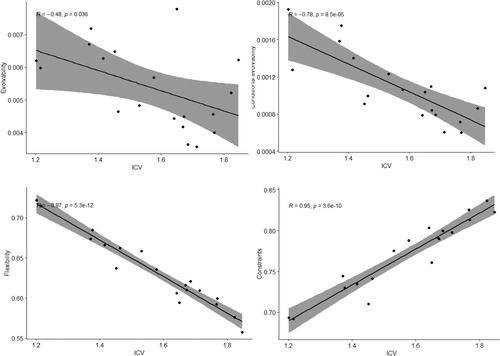Evolutionary selection and morphological integration in the hand of modern humans
Abstract
Objectives
To enhance our understanding of the evolutionary dynamics of the modern human hand by analyzing the degree of integration and ability to respond to selection pressures of each phalanx and metacarpal bone.
Materials and Methods
The sample comprised 96 adult individuals, both female and male, from Euro-American, Afro-American, and European populations. We collected 10 linear measurements from the 19 metacarpals and proximal, middle, and distal phalanges that constitute the five digits of the hand. Using these data, we constructed variance/covariance matrices to quantify the degree of integration and assess the hand ability to respond to selective pressures.
Results
Distal phalanges are the most evolvable and flexible elements, while being the least integrated and constrained. The thumb is similarly integrated as the second and third rays, while medial rays (fourth and fifth digits) are more integrated. However, the thumb presents different integration and response to selection patterns. No significant relationship was found between functionality and the indices of selection and integration. Finally, the correlation between hand and foot indices yielded significant results for conditional evolvability and flexibility.
Discussion
The findings suggest different evolutionary trajectories for the metacarpal and distal phalanx in the modern human thumb, likely reflecting varying functional and developmental pressures. The first metacarpal, characterized by high flexibility and low evolvability, appears to have reached a stable, optimal morphology, under stabilizing selection. In contrast, the distal phalanx seems to have undergone directional evolution, suggesting specialization for a specific function. Comparisons between hands and feet suggest that these structures evolve differently under directional selection but similarly under stabilizing selection.


 求助内容:
求助内容: 应助结果提醒方式:
应助结果提醒方式:


